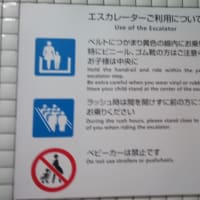2年前の当ブログは、「不自由展」問題一色だった。国際芸術祭「あいちトリエンナーレ2019」の企画展「表現の不自由展・その後」が右派の抗議で一時中止に追い込まれた問題だ。今夏、その出展作品を集めた展覧会にも攻撃の矛先が向けられている。(朝日新聞2021-7-6)
東京では開催告知段階で街宣車6台と数十人が周辺の住宅街で大音量で叫び、会場のオーナーが辞退に追い込まれた。急遽確保した別会場では、会場名を公表していないのに街宣活動をされて、「近隣に迷惑がかかるので貸せない」と言われたという。実行委メンバーに危害を加えるような内容のメールも数十通届いているという。
大阪では、府所有の会場に抗議のメールや電話が約70件あり、街宣活動もされたため、「安全確保は極めて困難」として利用承認を取り消した。
名古屋では市施設での展覧会が予定されているが、対抗して同時に向かいの展示室で「トリカエナハーレ」という展覧会が計画されているという。これは威圧的な街宣活動とは異なるが、同じ団体による過去の展覧会について愛知県知事は「明確にヘイト」と指摘しており、内容には注意が必要だ。(ヘイトと言論の自由の兼ね合いについては過去ブログで扱った。)
2年前もそうだったが、威圧や脅迫により展覧会を中止に追い込むという右派の作戦が東京でも大阪でも成功してしまった。そしてこれまた前回同様、このような力による言論封殺を「言論の自由」として是認する声がある。吉村洋文・大阪府知事は、「展示会を不快に思う方々の活動もまた自由だ」と述べたという。
だが、「言論の自由」には他者の言論を封じる自由は含まれないことを認識しておく必要がある(過去ブログ)。今回の記事でも識者が同趣旨のことを述べている。「作品を批判する自由は当然あるが、そのときに批判対象も同じ土俵にいられることが、『表現の自由』の大前提だ。周囲に恐怖を与え表現者を『出展できない』状態に追い込むことは、批判や抗議という言論の限度を超えた『暴力』であり、法的に認められない。」
ここまでは2年前に何度も書いたことと同趣旨だ。
だが今年は香港での言論弾圧を目の当たりにしたばかり。そして日本でも国会を軽視し、政府が拡大解釈する余地のある法律の強行採決が行なわれ、香港情勢が決して他人事ではないと書いたばかりだ(過去ブログ)。「不自由展」への威圧的な攻撃を見ると、日本に果たして言論の自由があるのかとの不安がますます強くなる。街宣をすれば「周囲に迷惑がかかる」ことになり、どんなことでも中止に追い込むことができるのが今の日本なのだ。
もちろん香港のように当局による弾圧ではないという違いは、まだ、ある。2年前は名古屋市長が「不自由展」批判をあおるような言動を行なっていたが(その後、対立した愛知県知事のリコール運動にも関与したが、結局リコール署名は所定数に達せず、あまつさえ大規模な署名偽造まで発覚した(朝日新聞2021-6-30))、「不自由展」で直接の攻撃に関わっているのは公権力ではない。
だが日本ではお上が直接手を下さなくても、国民同士の有言・無言の圧力によって従わせることが行なわれている。コロナ禍にあっては、そうした住民同士の同調圧力がはたらいたことが、欧米のような強力な措置を行なわなくても感染拡大が比較的抑制できた一因とされている(「自粛警察」と呼ばれる行き過ぎもあったが)。
今仮に公権力が表立って攻撃を組織していないとしても、その意を汲んで(「忖度」して)自発的に政府に反する言動に対する攻撃が行われたとしたら、それは政府による言論弾圧と同根だと言わざるを得ない。
追記:東京予定での開催をツイッターで告知した関係者に「やるなら妨害しにいきます。ガソリン持っていきますね」などと返信した40代の男が強要未遂容疑で書類送検された(朝日新聞2021-7-21)。言論の自由を超えた脅迫などに関しては、厳格な取り締まりを続けてほしい。(名古屋では結局、事実上の中止となってしまったが、爆竹の送り主はまだわかっていないのだろうか(東京新聞2021-7-9)。)
関連記事(2019年):
「「不自由展」への電凸攻撃の抜群の委縮効果のまた一例」
「「表現の不自由展」を守った大村知事が「ヘイト」展示は「中止すべき」」
「「不自由展」再開で残った課題」
「トリエンナーレへの補助金交付取り消しは「検閲」でないといえるのか?」
「「表現の不自由展」再開? 電話攻撃への対策は十分か」
「展示・発表の中止を求めることは言論の自由に矛盾する」
「芸術祭:「政府の気に入らなければ金は出さない」は憲法違反の検閲そのものだ」
「「表現の不自由」展やシンポの中止:威圧的なクレームが跋扈する社会はなんとかならないか」
「企画展やシンポを中止に追い込んだ電話攻勢を仕掛ける人たちの実態は?」
「「ネット世論」は少人数で操作できる」
「少女像:職員への過剰な抗議はパワハラだ」
「「表現の不自由展」中止:怒りは主催者ではなく、テロ予告をした犯人や扇動政治家に向けよう」
「「表現の不自由展」中止に海外でも批判――ソフトターゲットへの暴言をどう防ぐ?」
「「悪質クレーム」「客によるパワハラ」:ガイドライン充実のために」
(機械翻訳をベースに英語版を作ってみました。)
Two years ago, this blog was all about the "Lack-of-Freedom-of-Expression Exhibit" problem. The exhibition, part of the international art festival "Aichi Triennale 2019", was forced to be closed due to the protest of the right wing. This summer, the brunt of the attack is also being directed to new exhibitions of the works of the 2019 exhibition. ( Asahi Shimbun 2021-7-6 (paid site in Japanese))
In Tokyo, at the stage of the announcement of the event, six sound trucks and dozens of people shouted loudly in the surrounding residential area, and the owner of the venue was forced to withdraw its use. Right wing campaign also came to another venue even before the place was announced, and its permission of use was withdrawn because it would cause trouble to the neighborhood. There are dozens of emails to the effect that the members of the executive committee would be in danger.
In Osaka, there were about 70 protest emails and phone calls at the venue owned by the prefecture, and there was also a campaign by sound trucks, so the approval for use was revoked because it was "extremely difficult to ensure safety."
In Nagoya, the exhibition is scheduled to be held at a facility of the city. The opponents plans an exhibition called "Trikaenahare" to be held in a room just opposite the "Lack-of-Freedom" exhibition. This is different from the intimidating campaigns, but a past exhibition by the same group, Governor of Aichi pointed out, clearly falls under "hate." So its content should be watched. (The balance between hate and freedom of speech was dealt with in a past article (Japanese).)
As was the case two years ago, the right-wingers successfully forced the exhibition to be canceled by intimidation both in Tokyo and Osaka. And again, there are voices that endorse the suppression of speech as "free speech." Hirofumi Yoshimura, Governor of Osaka Prefecture, said, "The activities of people who are uncomfortable with the exhibition are also free."
However, "freedom of speech" does not include the freedom to block the speech of others (a past article (Japanese)). In the above-quoted newspaper article, a scholar stated the same point: "Of course, there is freedom to criticize the work, but it is indispensable for "freedom of speech" that the subject of criticism remains on the same ground. Intimidating related people so that they "cannot speak up" is a "violence" that goes beyond the limits of criticism and protest, and is not legally allowed."
So far, it's the same as what I wrote time and time again two years ago.
But this year, we just witnessed the suppression of speech in Hong Kong. And even in Japan, the parliament has been disregarded. Recently, when a law that leaves room for the government to expand its applicability was steamrolled through the diet, I wrote that we could not look on the situation in Hong Kong with indifference (a past article (Japanese)). The intimidating attack on the "Lack-of-Freedom Exhibit" makes us even more worried about freedom of speech in Japan, where one can force anything to be cancelled by simply making a loud sound with campaign trucks to cause "inconvenience" to people around.
Of course, there is still a difference that it is not a crackdown by the authorities as in Hong Kong. Two years ago, the mayor of Nagoya said things as if instigating a campaign against the "Lack-of-Freedom Exhibit" (after that, he was involved in the recall movement of the Governor of Aichi Prefecture, which did not reach the number required even though a huge number of forged signatures were planted ( Asahi Shimbun 2021-6-30 (paid site in Japanese))). Still, those now directly involved in the attack against the "Lack-of-Freedom Exhibit", do not appear to belong to the public authority.
However, in Japan, even if the government does not act by itself, people tend to do as others do by express or implicit peer pressure. In the case of corona virus infection, such a peer pressure is counted as one reason that the spread of infection has been held relatively low without strong measures as in Europe and the United States. (There have been even cases in which policing volunteers went too far.)
Even if the public authority does not openly organize an attack, a voluntary attack to the government's liking is no different from suppression of speech by the government.
Related links (2019):
"Citizens of Aichi, Japan Demand the Reinstatement of the Aichi Triennale 2019 "Lack-of-Freedom-of-Expression Exhibit: Part II""
東京では開催告知段階で街宣車6台と数十人が周辺の住宅街で大音量で叫び、会場のオーナーが辞退に追い込まれた。急遽確保した別会場では、会場名を公表していないのに街宣活動をされて、「近隣に迷惑がかかるので貸せない」と言われたという。実行委メンバーに危害を加えるような内容のメールも数十通届いているという。
大阪では、府所有の会場に抗議のメールや電話が約70件あり、街宣活動もされたため、「安全確保は極めて困難」として利用承認を取り消した。
名古屋では市施設での展覧会が予定されているが、対抗して同時に向かいの展示室で「トリカエナハーレ」という展覧会が計画されているという。これは威圧的な街宣活動とは異なるが、同じ団体による過去の展覧会について愛知県知事は「明確にヘイト」と指摘しており、内容には注意が必要だ。(ヘイトと言論の自由の兼ね合いについては過去ブログで扱った。)
2年前もそうだったが、威圧や脅迫により展覧会を中止に追い込むという右派の作戦が東京でも大阪でも成功してしまった。そしてこれまた前回同様、このような力による言論封殺を「言論の自由」として是認する声がある。吉村洋文・大阪府知事は、「展示会を不快に思う方々の活動もまた自由だ」と述べたという。
だが、「言論の自由」には他者の言論を封じる自由は含まれないことを認識しておく必要がある(過去ブログ)。今回の記事でも識者が同趣旨のことを述べている。「作品を批判する自由は当然あるが、そのときに批判対象も同じ土俵にいられることが、『表現の自由』の大前提だ。周囲に恐怖を与え表現者を『出展できない』状態に追い込むことは、批判や抗議という言論の限度を超えた『暴力』であり、法的に認められない。」
ここまでは2年前に何度も書いたことと同趣旨だ。
だが今年は香港での言論弾圧を目の当たりにしたばかり。そして日本でも国会を軽視し、政府が拡大解釈する余地のある法律の強行採決が行なわれ、香港情勢が決して他人事ではないと書いたばかりだ(過去ブログ)。「不自由展」への威圧的な攻撃を見ると、日本に果たして言論の自由があるのかとの不安がますます強くなる。街宣をすれば「周囲に迷惑がかかる」ことになり、どんなことでも中止に追い込むことができるのが今の日本なのだ。
もちろん香港のように当局による弾圧ではないという違いは、まだ、ある。2年前は名古屋市長が「不自由展」批判をあおるような言動を行なっていたが(その後、対立した愛知県知事のリコール運動にも関与したが、結局リコール署名は所定数に達せず、あまつさえ大規模な署名偽造まで発覚した(朝日新聞2021-6-30))、「不自由展」で直接の攻撃に関わっているのは公権力ではない。
だが日本ではお上が直接手を下さなくても、国民同士の有言・無言の圧力によって従わせることが行なわれている。コロナ禍にあっては、そうした住民同士の同調圧力がはたらいたことが、欧米のような強力な措置を行なわなくても感染拡大が比較的抑制できた一因とされている(「自粛警察」と呼ばれる行き過ぎもあったが)。
今仮に公権力が表立って攻撃を組織していないとしても、その意を汲んで(「忖度」して)自発的に政府に反する言動に対する攻撃が行われたとしたら、それは政府による言論弾圧と同根だと言わざるを得ない。
追記:東京予定での開催をツイッターで告知した関係者に「やるなら妨害しにいきます。ガソリン持っていきますね」などと返信した40代の男が強要未遂容疑で書類送検された(朝日新聞2021-7-21)。言論の自由を超えた脅迫などに関しては、厳格な取り締まりを続けてほしい。(名古屋では結局、事実上の中止となってしまったが、爆竹の送り主はまだわかっていないのだろうか(東京新聞2021-7-9)。)
関連記事(2019年):
「「不自由展」への電凸攻撃の抜群の委縮効果のまた一例」
「「表現の不自由展」を守った大村知事が「ヘイト」展示は「中止すべき」」
「「不自由展」再開で残った課題」
「トリエンナーレへの補助金交付取り消しは「検閲」でないといえるのか?」
「「表現の不自由展」再開? 電話攻撃への対策は十分か」
「展示・発表の中止を求めることは言論の自由に矛盾する」
「芸術祭:「政府の気に入らなければ金は出さない」は憲法違反の検閲そのものだ」
「「表現の不自由」展やシンポの中止:威圧的なクレームが跋扈する社会はなんとかならないか」
「企画展やシンポを中止に追い込んだ電話攻勢を仕掛ける人たちの実態は?」
「「ネット世論」は少人数で操作できる」
「少女像:職員への過剰な抗議はパワハラだ」
「「表現の不自由展」中止:怒りは主催者ではなく、テロ予告をした犯人や扇動政治家に向けよう」
「「表現の不自由展」中止に海外でも批判――ソフトターゲットへの暴言をどう防ぐ?」
「「悪質クレーム」「客によるパワハラ」:ガイドライン充実のために」
(機械翻訳をベースに英語版を作ってみました。)
Two years ago, this blog was all about the "Lack-of-Freedom-of-Expression Exhibit" problem. The exhibition, part of the international art festival "Aichi Triennale 2019", was forced to be closed due to the protest of the right wing. This summer, the brunt of the attack is also being directed to new exhibitions of the works of the 2019 exhibition. ( Asahi Shimbun 2021-7-6 (paid site in Japanese))
In Tokyo, at the stage of the announcement of the event, six sound trucks and dozens of people shouted loudly in the surrounding residential area, and the owner of the venue was forced to withdraw its use. Right wing campaign also came to another venue even before the place was announced, and its permission of use was withdrawn because it would cause trouble to the neighborhood. There are dozens of emails to the effect that the members of the executive committee would be in danger.
In Osaka, there were about 70 protest emails and phone calls at the venue owned by the prefecture, and there was also a campaign by sound trucks, so the approval for use was revoked because it was "extremely difficult to ensure safety."
In Nagoya, the exhibition is scheduled to be held at a facility of the city. The opponents plans an exhibition called "Trikaenahare" to be held in a room just opposite the "Lack-of-Freedom" exhibition. This is different from the intimidating campaigns, but a past exhibition by the same group, Governor of Aichi pointed out, clearly falls under "hate." So its content should be watched. (The balance between hate and freedom of speech was dealt with in a past article (Japanese).)
As was the case two years ago, the right-wingers successfully forced the exhibition to be canceled by intimidation both in Tokyo and Osaka. And again, there are voices that endorse the suppression of speech as "free speech." Hirofumi Yoshimura, Governor of Osaka Prefecture, said, "The activities of people who are uncomfortable with the exhibition are also free."
However, "freedom of speech" does not include the freedom to block the speech of others (a past article (Japanese)). In the above-quoted newspaper article, a scholar stated the same point: "Of course, there is freedom to criticize the work, but it is indispensable for "freedom of speech" that the subject of criticism remains on the same ground. Intimidating related people so that they "cannot speak up" is a "violence" that goes beyond the limits of criticism and protest, and is not legally allowed."
So far, it's the same as what I wrote time and time again two years ago.
But this year, we just witnessed the suppression of speech in Hong Kong. And even in Japan, the parliament has been disregarded. Recently, when a law that leaves room for the government to expand its applicability was steamrolled through the diet, I wrote that we could not look on the situation in Hong Kong with indifference (a past article (Japanese)). The intimidating attack on the "Lack-of-Freedom Exhibit" makes us even more worried about freedom of speech in Japan, where one can force anything to be cancelled by simply making a loud sound with campaign trucks to cause "inconvenience" to people around.
Of course, there is still a difference that it is not a crackdown by the authorities as in Hong Kong. Two years ago, the mayor of Nagoya said things as if instigating a campaign against the "Lack-of-Freedom Exhibit" (after that, he was involved in the recall movement of the Governor of Aichi Prefecture, which did not reach the number required even though a huge number of forged signatures were planted ( Asahi Shimbun 2021-6-30 (paid site in Japanese))). Still, those now directly involved in the attack against the "Lack-of-Freedom Exhibit", do not appear to belong to the public authority.
However, in Japan, even if the government does not act by itself, people tend to do as others do by express or implicit peer pressure. In the case of corona virus infection, such a peer pressure is counted as one reason that the spread of infection has been held relatively low without strong measures as in Europe and the United States. (There have been even cases in which policing volunteers went too far.)
Even if the public authority does not openly organize an attack, a voluntary attack to the government's liking is no different from suppression of speech by the government.
Related links (2019):
"Citizens of Aichi, Japan Demand the Reinstatement of the Aichi Triennale 2019 "Lack-of-Freedom-of-Expression Exhibit: Part II""
















